Heavy Shank Hand Twisted Coin Silver Vintage Navajo Ingot Bracelet
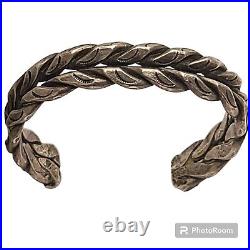
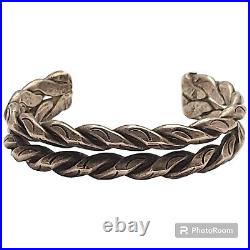
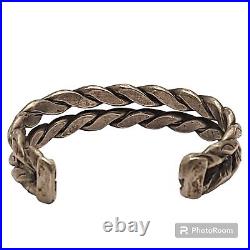
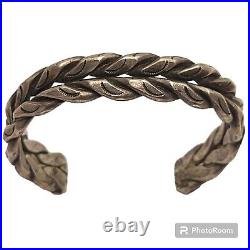
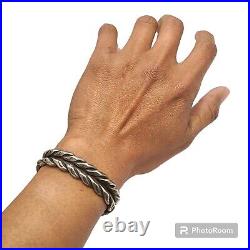
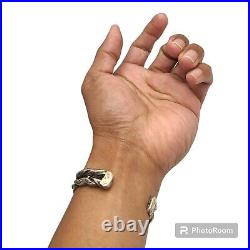

This is a remarkable vintage Navajo ingot silver cuff bracelet. This wonderful piece contains two phenomenal large and thick silver shanks that are unique and amazing.
Featuring exquisite hand stamped sunburst designs All very thick and beautiful. This bracelet is so amazing. The width of the bracelet measures around 14mm Cir.The inside end to end measures around 5" with an additional 1-? No marks but tested as coin silver great addition to your collection??
The Complete Visitors Guide to Arts, Dining and Santa Fe Lifestyle. The History of Silver Jewelry of the Navajo and Pueblo Indians. By Michael Ettema, Director of Mark Sublette Medicine Man Gallery, Santa fe. The Navajo and Pueblo smiths made these early jewelry forms primarily for themselves and their families, as well as for trade to other community members and other tribes.
They had a great love of ornament and the Navajo, in particular, used jewelry as a means of accumulating, and displaying, wealth. Although most Navajos wore some jewelry on a daily basis, they put their entire fortune on display during community events. Considering this dual function, Native-owned jewelry tended to be very heavy and showy, incorporating as much silver as was practical and as its owner could afford. By the turn of the last century, it became common practice for the Navajo to place some of their jewelry in pawn at the local trading post when it was not being used. Owners could borrow for food and supplies against the pawned jewelry, and they knew it would be secure in the trader's safe until the next public occasion when they would redeem it and proudly wear it again.
Occasionally an owner would be unable to redeem an item and, after a certain period of time, it would be considered dead pawn. The trader could then sell it at will. Some traders also bought Indian jewelry specifically to sell to their Anglo customers. In this way, some of the early, high-quality jewelry gradually made its way to non-Indian owners. Present-day collectors generically identify these older, heavier items as old pawn.